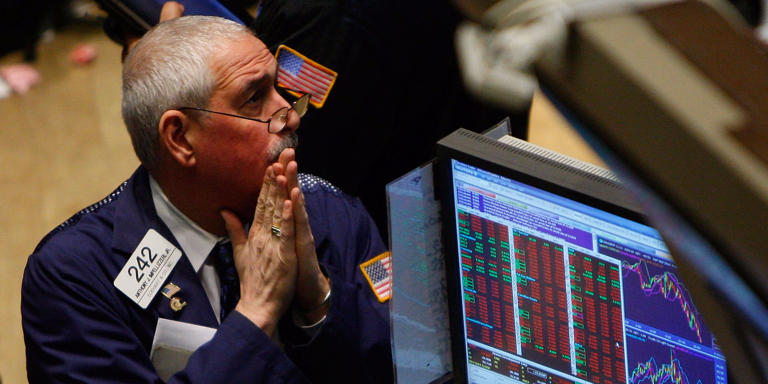The stock market is flashing similarities to historic asset bubbles,” cautioned Albert Edwards from Société Générale (SocGen). “That could be a sign the Fed’s monetary policy isn’t nearly tight enough,” he said. “The Wall Street bear has been cautioning around a recession and coming stock correction for months.
Albert Edwards, a respected global strategist at Societe Generale, has recently sounded a cautionary note regarding the state of the stock market, drawing parallels to historic bubbles. Edwards, who has gained recognition as one of Wall Street’s most bearish forecasters, points to the remarkable surge in stock prices over the past year, exemplified by the S&P 500’s impressive 27% gain from its lowest point in October 2022.
Central to Edwards’ concern is the perception that the Federal Reserve’s monetary policy might not be as restrictive as market participants believe. Despite the central bank’s efforts to reduce its balance sheet and the anticipation of future rate cuts, Edwards argues that financial conditions remain relatively loose. This situation has facilitated a string of record highs in the S&P 500 and a noticeable uptick in the total money stock, a metric used to gauge liquidity in the economy, as reported by Federal Reserve data.
In a recent communication, Edwards expressed skepticism regarding the prevailing narrative surrounding the anticipated surge in corporate profits driven by artificial intelligence (AI), which is perceived as justifying the lofty valuations in the stock market. Drawing parallels to the late 1990s technology, media, and telecommunications (TMT) bubble, Edwards urges caution against excessive optimism and suggests that the Fed’s actions over the past year may have contributed to an environment of overindulgence in liquidity.
Despite investor enthusiasm for the so-called “AI revolution,” Edwards points to signs of waning analyst optimism and diminishing corporate earnings expectations. Notably, he highlights that the proportion of analyst estimate changes categorized as upgrades has fallen below 50% in the S&P Composite, deviating from the patterns observed in typical cyclical recoveries. Edwards questions whether the current backdrop of tepid profits growth is truly compatible with the S&P’s remarkable ascent of one-third within a single year, raising the specter that the market’s rally may be more attributable to the Fed’s liquidity injections than underlying fundamentals.
With a track record that includes prescient warnings about previous market downturns, notably the dot-com crash, Edwards has long warned of the potential for a bubble in stocks, particularly amid the fervor surrounding artificial intelligence. He cautions that stocks could be vulnerable to a substantial correction, especially in the event of a recession in the United States. As such, his insights serve as a timely reminder for investors to exercise prudence and vigilance in navigating the complex and uncertain landscape of today’s financial markets.
